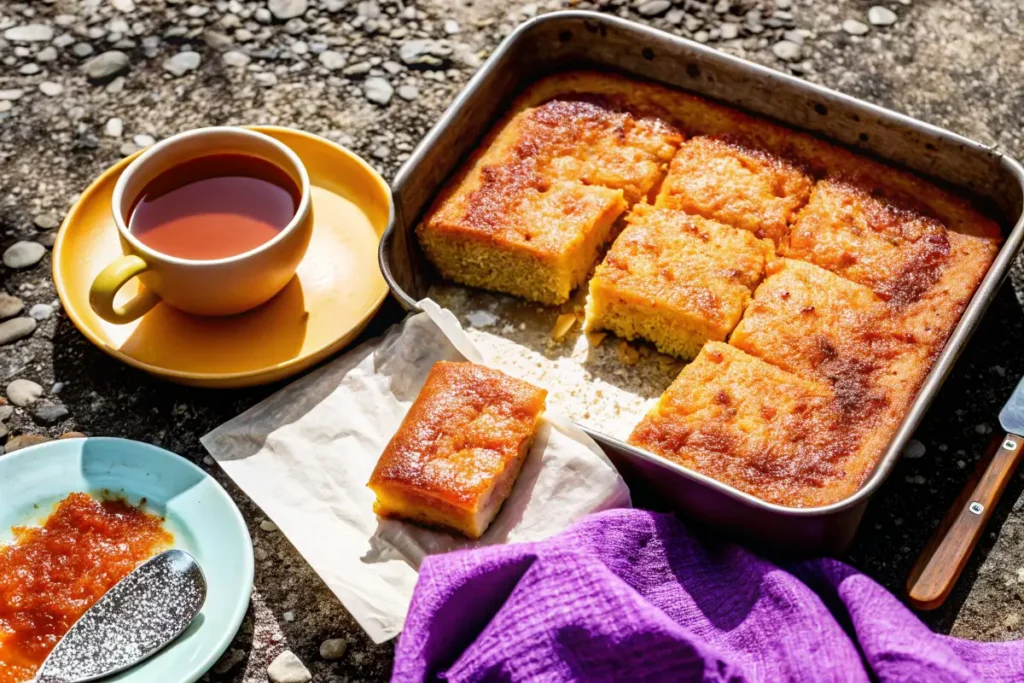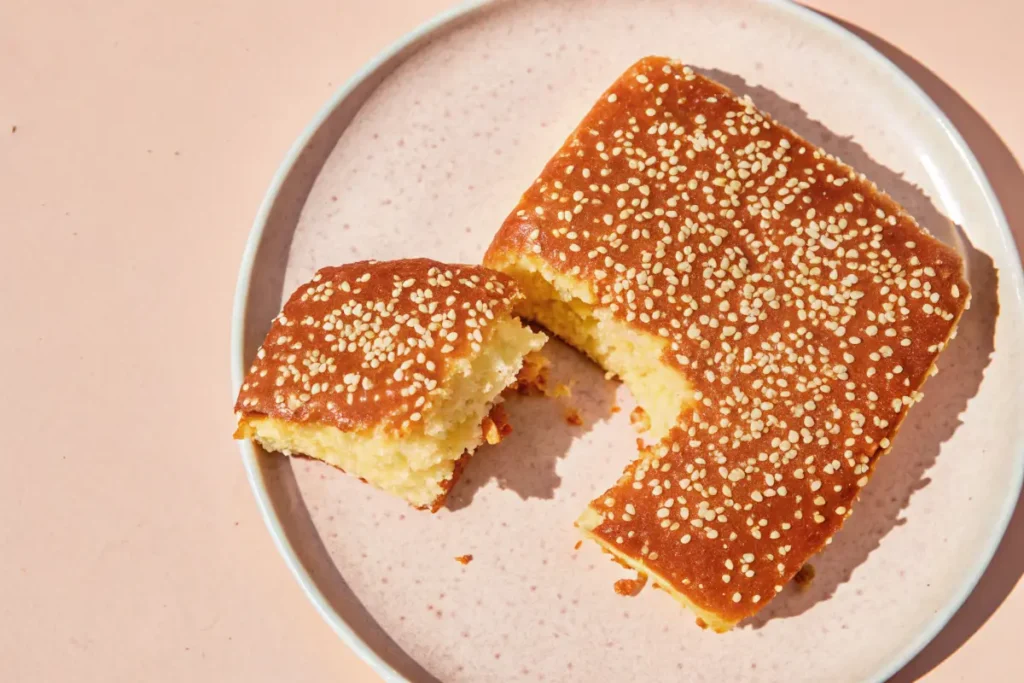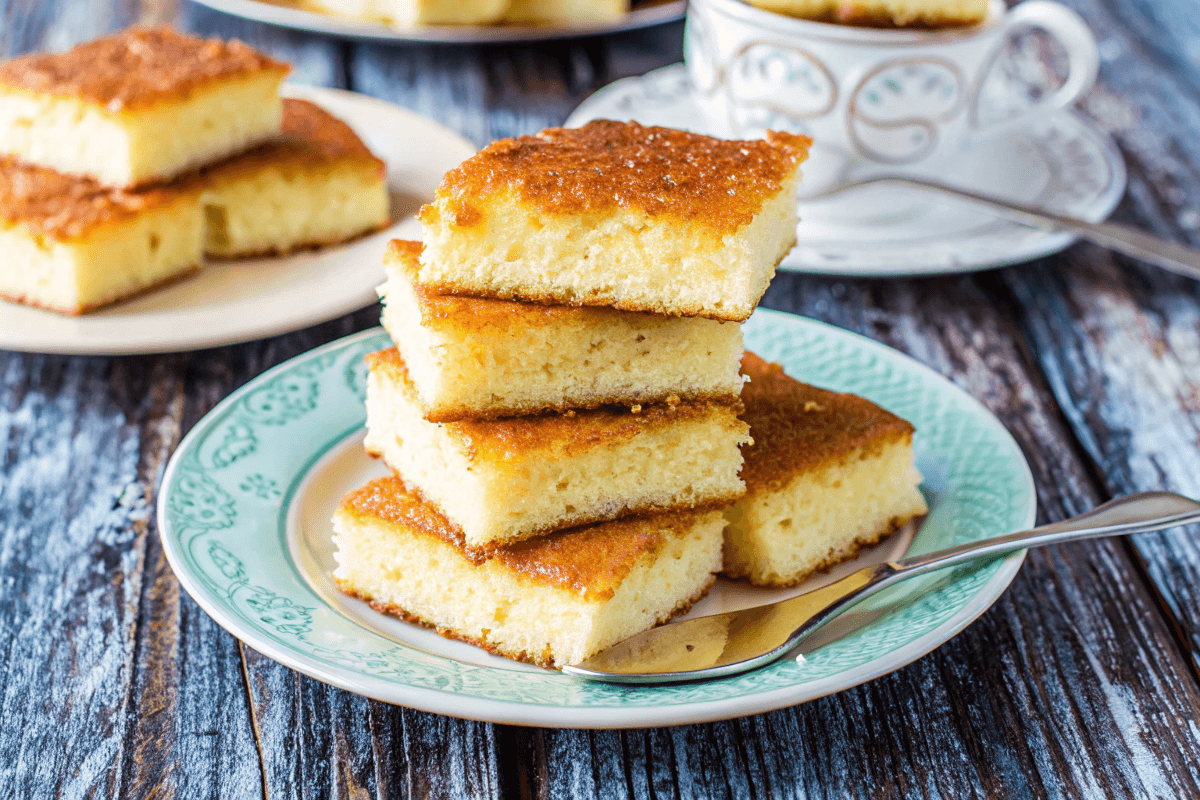Watching my grandmother make quesadilla bread was magical. She turned simple ingredients into golden, warm bread. The sizzle and aroma of melting cheese filled the air, connecting us to our Mexican roots.

Quesadilla bread is more than a quick meal. It’s a canvas for creativity, a staple of Mexican cuisine. Whether you’re a home cook or a culinary enthusiast, learning to make perfect Mexican bread opens up a world of delicious possibilities.
In this guide, you’ll learn the secrets to making authentic quesadilla bread. We’ll cover the history of tortillas and the techniques to make mouth-watering quesadillas in under 10 minutes.
Get ready to dive into the world of Mexican bread. Here, tradition meets innovation, and every bite tells a story of cultural richness and culinary expertise.
Understanding the History and Origins of Mexican Tortillas
Tortillas have a long history, going back thousands of years. They are a big part of Mexico’s culture. These flatbreads have become a favorite around the world, inspiring many recipes.
The Aztecs and Maya civilizations started making tortillas. They used a special process called nixtamalization. This made corn tortillas much healthier.
Traditional Mexican Tortilla Making
Long ago, making tortillas was a detailed process. It turned corn into food that was good for you. The nixtamalization method was a big discovery:
- Soaking corn kernels in alkaline solution
- Removing outer hull to enhance digestibility
- Increasing protein and mineral content
- Improving overall nutritional profile
Evolution from Corn to Flour Tortillas
When the Spanish came in 1523, they brought wheat. This changed tortillas a lot. Flour tortillas became popular in northern Mexico and the southwestern US.
| Tortilla Type | Origin | Primary Regions |
|---|---|---|
| Corn Tortillas | Ancient Mesoamerica | Central and Southern Mexico |
| Flour Tortillas | Spanish Colonial Period | Northern Mexico, Southwestern US |
Cultural Significance in Mexican Cuisine
Tortillas are more than food; they are a cultural symbol. They are used in many dishes, from tacos to quesadillas. These flatbreads bring families together through food.
The tortilla is not just bread, but a canvas of cultural expression and culinary innovation.
Essential Ingredients for Perfect Quesadilla Bread
Making a tasty homemade quesadilla begins with the right ingredients. These ingredients turn simple parts into a delicious bread with cheese. Choosing the right ingredients and knowing their roles is key to making great tortillas.

Flour Selection and Quality
Choosing the right flour is vital for making homemade quesadillas. All-purpose flour is the best choice for its texture and consistency. Look for high-quality, unbleached flour with 10-12% protein. This ensures your tortillas are elastic and soft.
- Unbleached all-purpose flour
- Protein content of 10-12%
- Fresh, recently purchased flour
The Role of Fat in Tortilla Making
Fat is crucial for making soft, pliable tortillas. You can use:
| Fat Type | Flavor Profile | Texture Impact |
|---|---|---|
| Lard | Traditional Mexican flavor | Extra flaky texture |
| Vegetable Shortening | Neutral taste | Consistent softness |
| Butter | Rich, creamy taste | Tender crumb |
Salt and Water Temperature Guidelines
The secret to perfect tortillas is in the water and salt. Use warm water (around 110°F) and fine sea salt for best results. This mix activates gluten and boosts flavor without making the dough tough.
Pro tip: Always measure ingredients precisely for consistent tortilla quality.
Step-by-Step Guide to Making Homemade Tortillas
Making your own savory bread at home is simpler than you think. This simple bread recipe for homemade tortillas will turn your kitchen into a Mexican culinary haven. With just a few ingredients and some practice, you’ll make delicious tortillas that are better than store-bought ones.
Ingredients You’ll Need
- 2 cups (260g) all-purpose flour
- 1 teaspoon fine sea salt
- 2/3 cup (160ml) very warm water
- 5 tablespoons fat (oil, lard, or butter)
Preparation Steps
- Mix Dry Ingredients: Combine flour and salt in a large mixing bowl
- Add Fat: Work in the fat until the mixture resembles coarse crumbs
- Incorporate Water: Gradually add warm water, kneading until a smooth dough forms
- Rest the Dough: Let the dough sit for 30 minutes at room temperature
Pro tip: The secret to perfect tortillas is in the dough’s consistency. It should feel soft and pliable, similar to play-dough. If it’s too sticky, add a bit more flour; if too dry, incorporate a little more water.
Cooking Techniques
When you’re ready to cook, divide the dough into 10-12 equal portions. Roll each piece into a thin, 8-inch circle. Cook on a hot, dry skillet for 30-45 seconds per side until light brown spots appear.
“Homemade tortillas are like edible canvas – simple, yet capable of becoming something extraordinary!”
With practice, you’ll master the art of creating authentic, delicious tortillas that will impress your family and friends. Each batch yields approximately 10-12 tortillas, perfect for quesadillas, wraps, or enjoying on their own.
The Art of Quesadilla Bread Preparation
Learning to make quesadilla bread is all about precision and practice. It starts with knowing the basic techniques. These steps turn simple ingredients into tasty bread appetizers.
Mixing and Kneading Techniques
Good quesadilla bread begins with the right mix. You want a dough that’s smooth and elastic. This makes your tortillas tender. Here’s how to do it:
- Combine dry ingredients thoroughly
- Add liquid ingredients gradually
- Knead the dough until it becomes soft and pliable
Pro tip: Don’t over-knead. It can make your tortillas tough. Stop when the dough feels smooth and elastic.
Resting Time and Dough Management
Resting is key in making quesadilla bread. After kneading, let your dough rest for 15-30 minutes. This relaxes the gluten. It makes rolling easier and prevents the dough from springing back.
Rolling Methods for Perfect Circles
Rolling out uniform, thin tortillas takes practice. Here are some tips for perfect quesadilla bread:
- Divide dough into equal portions
- Use a tortilla press or rolling pin
- Rotate dough while rolling to maintain circular shape
- Aim for thin, even thickness
“The secret to great tortillas is patience and consistent technique.”
With these skills, you’ll make your quesadilla bread stand out. You’ll impress your family and friends with your cooking skills.
Best Cheese Selections for Quesadillas
Choosing the right cheese is key to making perfect cheesy bread. The taste and feel of your quesadilla depend on the cheese you pick. Knowing which cheeses melt well can make a big difference.
Traditional Mexican cheeses are the best for quesadillas. Here are the top cheeses to take your dish to the next level:
- Oaxaca Cheese: Stringy and mild, perfect for melting
- Chihuahua Cheese: Creamy with buttery undertones
- Monterey Jack: Smooth and adaptable
- Sharp Cheddar: Adds robust flavor
- Mozzarella: Creates classic stretchy texture
Experts say mixing cheeses is the secret to great flavor. Try using 1½ cups of sharp cheddar and 1½ cups of Monterey Jack. This mix makes your quesadilla rich and melty, perfect with homemade tortillas.
“The secret to an incredible quesadilla is freshly grated cheese that melts perfectly!” – Mexican Culinary Expert
| Cheese Type | Melting Quality | Flavor Profile |
|---|---|---|
| Oaxaca | Excellent | Mild, Creamy |
| Chihuahua | Very Good | Buttery, Smooth |
| Monterey Jack | Superior | Neutral, Adaptable |
Pro tip: Always grate your cheese fresh for the best melt and taste. Pre-shredded cheese can have additives that affect its quality.
Essential Equipment and Tools
Making the perfect homemade quesadilla needs more than just skill. The right tools can make your easy bread recipe a true masterpiece. Let’s look at the essential equipment that will make your quesadilla-making experience better.
Selecting the Right Cooking Surface
The cooking surface is key when making your homemade quesadilla. Cast-iron skillets and traditional griddles give the best heat and crispy texture. Here are the top choices:
- Cast-iron skillet for even heating
- Non-stick griddle for easy cooking
- Electric quesadilla makers for consistent results
Rolling Pins and Surface Preparation
A good rolling pin makes your tortillas thin and even. Wooden rolling pins are the best for control. To prepare your work surface, do the following:
- Clean the surface well
- Lightly flour the area
- Use a smooth, flat rolling pin
| Equipment Type | Recommended Size | Best For |
|---|---|---|
| Cast-Iron Skillet | 10-12 inches | Traditional quesadilla cooking |
| Electric Quesadilla Maker | 8-10 inches | Consistent, quick preparation |
| Wooden Rolling Pin | 18-20 inches | Even tortilla thickness |
Pro tip: Invest in quality tools that will last. A good skillet and rolling pin make making homemade quesadillas smooth and fun.
“The right equipment turns cooking from a chore into an art.” – Professional Chef
Cooking Techniques and Temperature Control
Cooking bread with cheese needs precision and heat control. The perfect golden-brown color comes from the right cooking method and temperature.
Choosing the right cooking technique can make your savory bread amazing. Here are the top methods for delicious results:
- Stovetop Cooking: Heat skillet to medium temperature
- Oven Baking: Preheat to 350°F
- Air Fryer: Set temperature to 350°F
- Broiler Method: Quick final crisping
Cooking times change based on your method:
| Cooking Method | Temperature | Cooking Time |
|---|---|---|
| Stovetop | Medium Heat | 45 seconds per side |
| Oven | 350°F | 10-15 minutes |
| Air Fryer | 350°F | 3-5 minutes |
| Gas Flame | Direct Heat | 15 seconds per side |
Look for bubbling surfaces and golden edges when cooking. These signs mean your tortilla is ready to become a tasty quesadilla.
Pro tip: Always keep your cooking surface clean and lightly oiled to prevent sticking and ensure even heating.
Remember, practice makes perfect. Each cooking method gives unique textures and flavors. Try different techniques to find your favorite.
Common Mistakes to Avoid When Making Tortillas
Making perfect quesadilla bread needs precision and practice. Even skilled cooks face challenges. Knowing common mistakes helps you get better at making tortillas.
Dough Consistency Challenges
Getting the dough right is key for great quesadilla bread. Here are common dough issues:
- Overly dry dough that crumbles when rolling
- Excessively sticky dough that sticks to surfaces
- Uneven moisture distribution
The dough should be moist but not sticky, like playdough. Aim for a dough that’s smooth and easy to work with. It should hold its shape without breaking.
Temperature Management Issues
Controlling the temperature is crucial when cooking tortillas. Wrong heat can cause uneven cooking and tough bread.
| Cooking Problem | Solution |
|---|---|
| Low heat | Tortillas become tough and dry |
| High heat | Tortillas burn quickly and develop bitter taste |
| Inconsistent heat | Uneven browning and cooking |
Storage and Preservation Errors
Storing tortillas wrong can spoil your fresh bread. To keep it soft and tasty:
- Store tortillas in an airtight container
- Separate layers with parchment paper
- Refrigerate for up to one week
- Freeze for long-term storage
“A well-stored tortilla is a delicious tortilla!” – Culinary Wisdom
Avoiding these mistakes will help you make consistently tasty quesadilla bread. It will impress everyone.
Creative Filling Combinations
Turning your quesadilla bread into a tasty appetizer needs creativity and the right mix of ingredients. Your homemade tortillas can be a blank canvas for new flavors. This brings together tastes that excite your senses.
For the best cheesy bread, try these exciting fillings:
- Classic Mexican Style:
- Black beans
- Shredded chicken
- Pepper jack cheese
- Diced jalapeños
- Vegetarian Delight:
- Sautéed spinach
- Mushrooms
- Goat cheese
- Roasted bell peppers
- Gourmet Fusion:
- Caramelized onions
- Crispy bacon bits
- Sharp cheddar
- Chopped scallions
Pro tip: Mix proteins, veggies, and cheeses for a balanced filling. Try different textures and tastes to make your quesadillas stand out. They’ll wow your family and friends.
“The secret to an amazing quesadilla is not just in the tortilla, but in the harmony of its fillings.” – Chef Maria Rodriguez
Make sure to cook your quesadillas until the cheese melts well and the tortilla gets crispy. Your bread appetizer will be a hit!
Storage and Reheating Tips
Keeping your homemade Mexican bread and quesadillas fresh is key. The right storage and reheating methods can make every bite as good as the first. Your easy bread recipe will stay delicious with these tips.
Short-Term Storage Methods
- Store tortillas in a resealable plastic bag
- Keep at room temperature for 1-2 days
- Place a paper towel inside to absorb moisture
- Seal bag tightly to prevent air exposure
Long-Term Preservation
Freezing is great for keeping your Mexican bread fresh longer. Wrap tortillas in parchment paper, then put them in a freezer-safe bag. Frozen tortillas can last up to 2 months.
Reheating Techniques
- Remove tortillas from refrigerator 30 minutes before reheating
- Use a skillet on medium heat
- Warm each side for 15-20 seconds
- Keep tortillas covered with a clean kitchen towel to retain moisture
Don’t microwave tortillas as it can dry them out. Reheating in a skillet keeps them soft and perfect for quesadillas.
Pro tip: Always reheat tortillas just before serving for the best texture and flavor!
Follow these tips to keep your homemade Mexican bread fresh and delicious. You’ll always have tasty bread ready to go.
Conclusion
Making the perfect homemade quesadilla is a fun journey. It mixes skill, passion, and creativity. You’ve turned your kitchen into a lively Tex-Mex spot. Now, you know how to make delicious tortillas.
Quesadillas are more than just food; they connect us to a rich tradition. You can try different fillings and cheeses to find your favorite. Remember, the more you make, the better you’ll get.
Quesadillas are also good for you. They can have whole grains, veggies, and proteins. They’re a great way to start your day with energy and nutrients.
Keep trying new things with quesadillas. Your kitchen is your playground. Share your creations and enjoy the process. Most of all, have fun cooking!
FAQ
What’s the difference between corn and flour tortillas?
Corn tortillas come from masa harina and are a staple in Mexico. Flour tortillas, made from wheat flour, are more common in northern Mexico and the U.S. Flour tortillas are softer and better for quesadillas.
How long can I store homemade tortillas?
Keep fresh tortillas in an airtight container at room temperature for 2-3 days. Refrigerate them for up to a week or freeze for 2 months. Always use parchment paper to separate layers.
What’s the best way to reheat tortillas?
Use a cast-iron skillet or comal for a few seconds on each side. Or, wrap them in a damp paper towel and microwave for 30 seconds. You can also warm them in a preheated oven wrapped in foil.
Can I make tortillas without a rolling pin?
Yes, you can use a clean wine bottle, a smooth glass, or press the dough between parchment paper with a flat-bottomed pan.
What cheese works best for quesadillas?
Queso blanco or Oaxaca cheese are top choices. If you can’t find them, Monterey Jack or mozzarella work well too. Look for cheeses that melt well and taste great.
How thick should tortillas be?
Tortillas should be about 1/8 inch thick. They should be thin but strong enough to hold fillings without tearing.
Can I make gluten-free tortillas?
Yes! Use corn masa, almond flour, or gluten-free flour blends to make tortillas safe for those with gluten sensitivities.
What’s the most common mistake when making tortillas?
Overworking the dough or using too warm water can make tortillas tough. Mix ingredients gently and use lukewarm water for soft tortillas.
How do I prevent tortillas from becoming dry?
Cover freshly cooked tortillas with a towel or use a tortilla warmer. This keeps them moist. Avoid exposing them to air to prevent drying.
Can I prepare tortilla dough in advance?
Yes, you can make the dough and refrigerate it for up to 24 hours. Let it come to room temperature before rolling and cooking for the best results.

